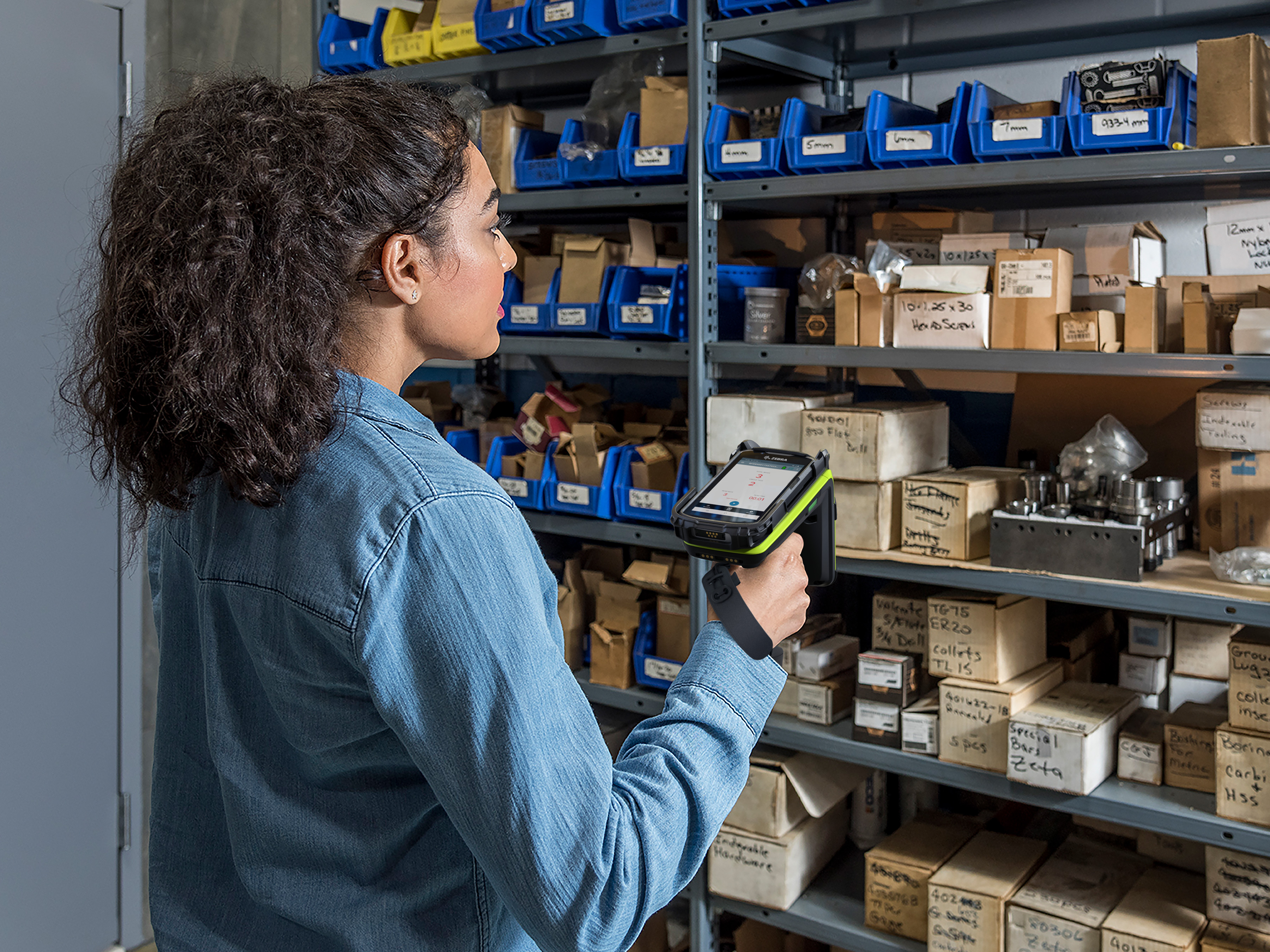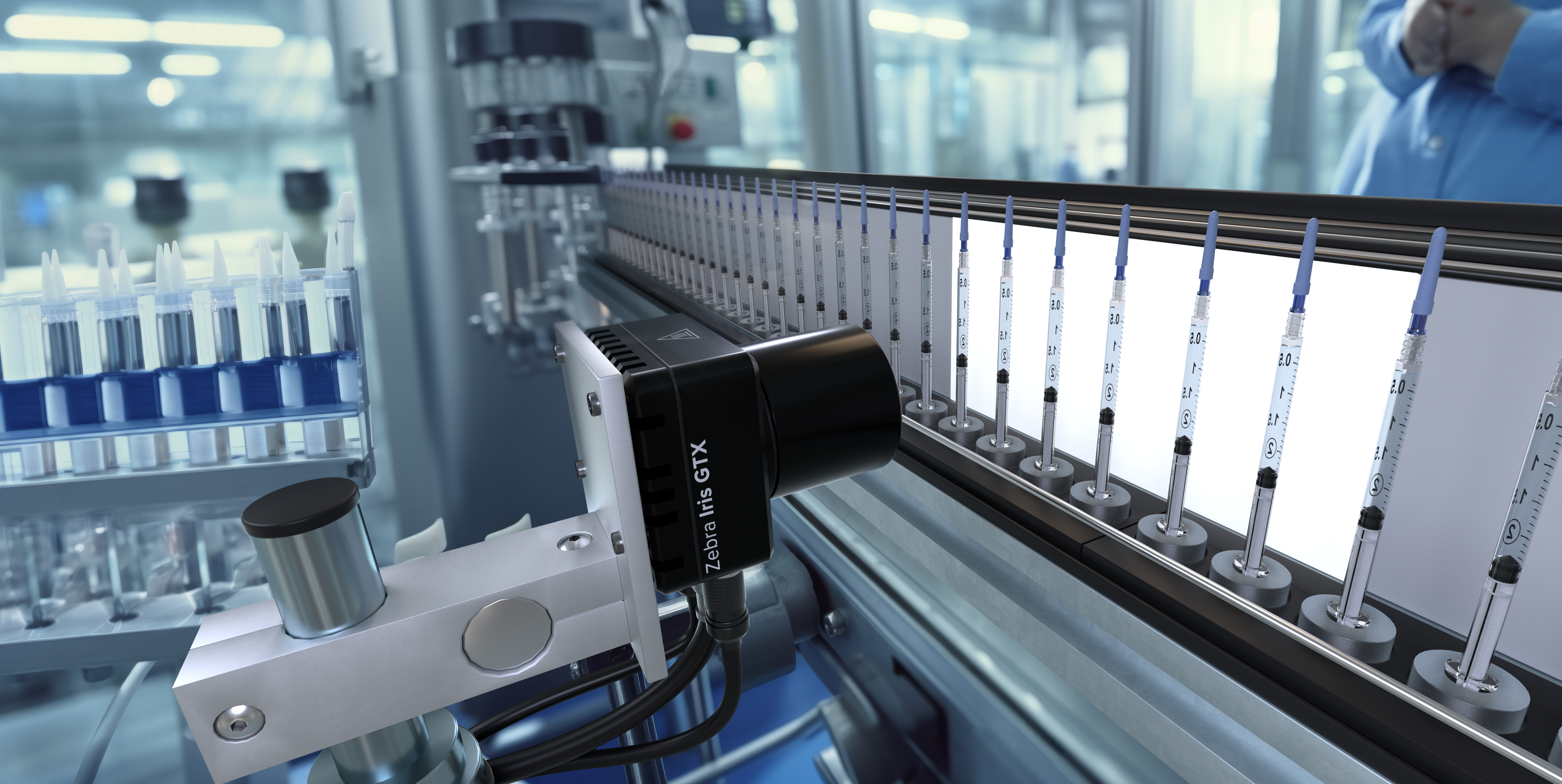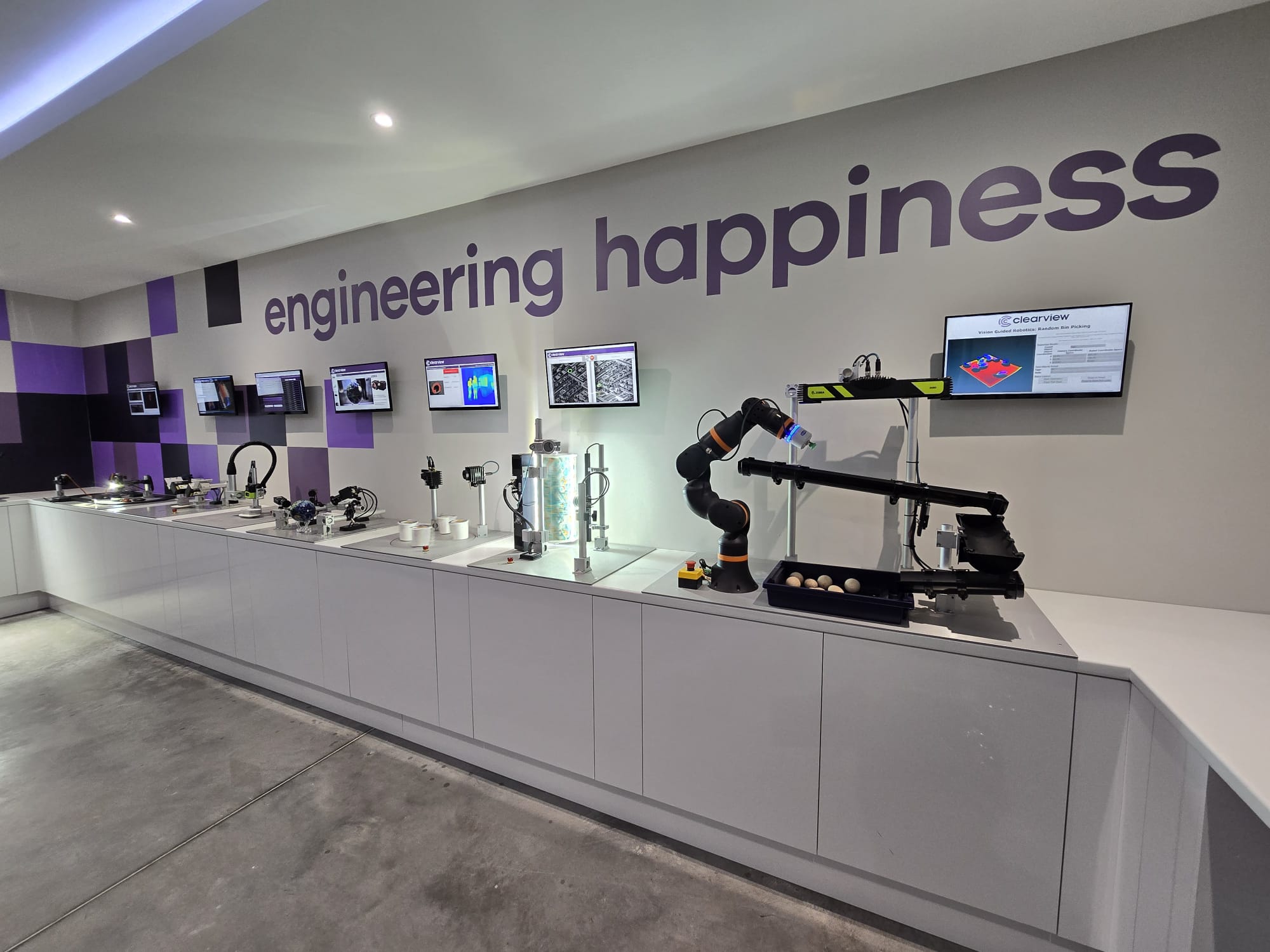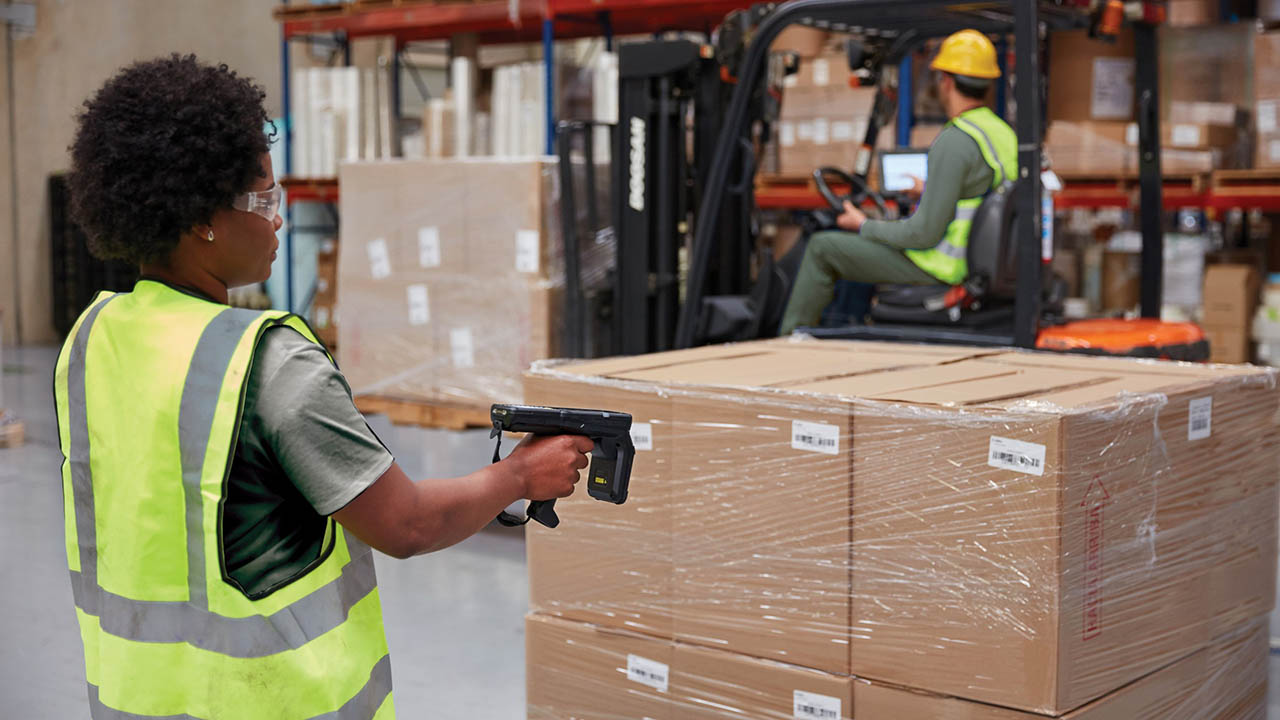Transform retail operations with Zebra’s retail technology solutions, featuring hardware and software for improving inventory management and empowering teams.
Streamline operations with Zebra’s healthcare technology solutions, featuring hardware and software to improve staff collaboration and optimize workflows.
Enhance processes with Zebra’s manufacturing technology solutions, featuring hardware and software for automation, data analysis, and factory connectivity.
Zebra’s transportation and logistics technology solutions feature hardware and software for enhancing route planning, visibility, and automating processes.
Learn how Zebra's public sector technology solutions empower state and local governments to improve efficiency with asset tracking and data capture devices.
Zebra's hospitality technology solutions equip your hotel and restaurant staff to deliver superior customer and guest service through inventory tracking and more.
Zebra's market-leading solutions and products improve customer satisfaction with a lower cost per interaction by keeping service representatives connected with colleagues, customers, management and the tools they use to satisfy customers across the supply chain.
Empower your field workers with purpose-driven mobile technology solutions to help them capture and share critical data in any environment.
Zebra's range of Banking technology solutions enables banks to minimize costs and to increase revenue throughout their branch network. Learn more.
Zebra's range of mobile computers equip your workforce with the devices they need from handhelds and tablets to wearables and vehicle-mounted computers.
Zebra's desktop, mobile, industrial, and portable printers for barcode labels, receipts, RFID tags and cards give you smarter ways to track and manage assets.
Zebra's 1D and 2D corded and cordless barcode scanners anticipate any scanning challenge in a variety of environments, whether retail, healthcare, T&L or manufacturing.
Zebra's extensive range of RAIN RFID readers, antennas, and printers give you consistent and accurate tracking.
Choose Zebra's reliable barcode, RFID and card supplies carefully selected to ensure high performance, print quality, durability and readability.
Zebra's location technologies provide real-time tracking for your organization to better manage and optimize your critical assets and create more efficient workflows.
Zebra's rugged tablets and 2-in-1 laptops are thin and lightweight, yet rugged to work wherever you do on familiar and easy-to-use Windows or Android OS.
With Zebra's family of fixed industrial scanners and machine vision technologies, you can tailor your solutions to your environment and applications.
Zebra’s line of kiosks can meet any self-service or digital signage need, from checking prices and stock on an in-aisle store kiosk to fully-featured kiosks that can be deployed on the wall, counter, desktop or floor in a retail store, hotel, airport check-in gate, physician’s office, local government office and more.
Adapt to market shifts, enhance worker productivity and secure long-term growth with AMRs. Deploy, redeploy and optimize autonomous mobile robots with ease.
Discover Zebra’s range of accessories from chargers, communication cables to cases to help you customize your mobile device for optimal efficiency.
Zebra's environmental sensors monitor temperature-sensitive products, offering data insights on environmental conditions across industry applications.
Enhance frontline operations with Zebra’s AI software solutions, which optimize workflows, streamline processes, and simplify tasks for improved business outcomes.
Zebra Workcloud, enterprise software solutions boost efficiency, cut costs, improve inventory management, simplify communication and optimize resources.
Keep labor costs low, your talent happy and your organization compliant. Create an agile operation that can navigate unexpected schedule changes and customer demand to drive sales, satisfy customers and improve your bottom line.
Drive successful enterprise collaboration with prioritized task notifications and improved communication capabilities for easier team collaboration.
Get full visibility of your inventory and automatically pinpoint leaks across all channels.
Reduce uncertainty when you anticipate market volatility. Predict, plan and stay agile to align inventory with shifting demand.
Drive down costs while driving up employee, security, and network performance with software designed to enhance Zebra's wireless infrastructure and mobile solutions.
Explore Zebra’s printer software to integrate, manage and monitor printers easily, maximizing IT resources and minimizing down time.
Make the most of every stage of your scanning journey from deployment to optimization. Zebra's barcode scanner software lets you keep devices current and adapt them to your business needs for a stronger ROI across the full lifecycle.
RFID development, demonstration and production software and utilities help you build and manage your RFID deployments more efficiently.
RFID development, demonstration and production software and utilities help you build and manage your RFID deployments more efficiently.
Zebra DNA is the industry’s broadest suite of enterprise software that delivers an ideal experience for all during the entire lifetime of every Zebra device.
Advance your digital transformation and execute your strategic plans with the help of the right location and tracking technology.
Boost warehouse and manufacturing operations with Symmetry, an AMR software for fleet management of Autonomous Mobile Robots and streamlined automation workflows.
The Zebra Aurora suite of machine vision software enables users to solve their track-and-trace, vision inspection and industrial automation needs.
Zebra Aurora Focus brings a new level of simplicity to controlling enterprise-wide manufacturing and logistics automation solutions. With this powerful interface, it’s easy to set up, deploy and run Zebra’s Fixed Industrial Scanners and Machine Vision Smart Cameras, eliminating the need for different tools and reducing training and deployment time.
Aurora Imaging Library™, formerly Matrox Imaging Library, machine-vision software development kit (SDK) has a deep collection of tools for image capture, processing, analysis, annotation, display, and archiving. Code-level customization starts here.
Aurora Design Assistant™, formerly Matrox Design Assistant, integrated development environment (IDE) is a flowchart-based platform for building machine vision applications, with templates to speed up development and bring solutions online quicker.
Designed for experienced programmers proficient in vision applications, Aurora Vision Library provides the same sophisticated functionality as our Aurora Vision Studio software but presented in programming language.
Aurora Vision Studio, an image processing software for machine & computer vision engineers, allows quick creation, integration & monitoring of powerful OEM vision applications.
Adding innovative tech is critical to your success, but it can be complex and disruptive. Professional Services help you accelerate adoption, and maximize productivity without affecting your workflows, business processes and finances.
Zebra's Managed Service delivers worry-free device management to ensure ultimate uptime for your Zebra Mobile Computers and Printers via dedicated experts.
Find ways you can contact Zebra Technologies’ Support, including Email and Chat, ask a technical question or initiate a Repair Request.
Zebra's Circular Economy Program helps you manage today’s challenges and plan for tomorrow with smart solutions that are good for your budget and the environment.
The Zebra Knowledge Center provides learning expertise that can be tailored to meet the specific needs of your environment.
Zebra has a wide variety of courses to train you and your staff, ranging from scheduled sessions to remote offerings as well as custom tailored to your specific needs.
Build your reputation with Zebra's certification offerings. Zebra offers a variety of options that can help you progress your career path forward.
Build your reputation with Zebra's certification offerings. Zebra offers a variety of options that can help you progress your career path forward.

#ThrowbackThursday: When the Touch Computer Took Over (Part 1)
If you were using technology in the early 1990s, there’s a good chance that you are familiar with the acronym PDA. No, I’m not talking about a “public display of affection.” Rather, the key-based “personal digital assistant” that one could use to share and retrieve information while on the move. I remember that, for many, being issued a PDA by an employer was viewed as a rite of passage in their career; a luxury of sorts. Many organizations were selective in their issuance of such devices, especially when they first came to market. They wanted to be sure such a significant investment (at the time) would pay off.
However, the value of this mobile computing technology was proven almost immediately for manufacturers, warehouse operators, field service organizations and others with highly mobile workforces. The need for real-time information was not exclusive to management-level team members. In fact, the case to give technicians, production line workers, warehouse pickers and other front-line workers a PDA-like device was perhaps the easiest to make. They didn’t have the luxury of sitting at an internet-connected desktop to access manuals, retrieve order information, update shipping logs or complete reports. Organizations needed a way to deliver the information to them, wherever they were. That’s exactly what the mobile computer was built to do, and it was a far-better option that old-school, paper-based information transfer for many reasons.
But the PDA was viewed as a consumer-grade device. Businesses needed an enterprise version. Enter Symbol Technologies and the enterprise digital assistant (or EDA): “a mobile device that looks like a smartphone or personal digital assistant (PDA) but has superior connectivity options and a more rugged build,” as Techopedia describes it.
The Early Days of the “EDA”
By the late 1990s, Symbol had solidified its position as a leader in the design and development of enterprise-grade barcode scanners and other wireless technologies. (Motorola Solutions actually acquired Symbol for $3.9 billion in 2006 to gain a better market position in the handheld computing market.)
That is because Symbol understood early on that, to successfully migrate manufacturing, warehouse, field workers and even healthcare workers to a technology-centric workflow, they needed to deliver a mobile computer with fast barcode scanning capabilities, a powerful computing core and a reliable wireless connection to complete their many different data-based tasks without disruption. After spending a significant amount of time on the ground with EDA users and understanding the potential line-of-business applications for EDAs, however, Symbol quickly recognized that a key-based device was not the future for many of its customers. While many warehouse applications utilized a “scan and enter” data entry flow – and still do today – most field and retail-based mobile applications rarely called for key-based data input. In fact, the keys could actually hinder efficiency. (The exception then and now would be in the transportation and distribution sectors, where drivers may need keys to input an address for navigation purposes.)
So, Symbol set out to improve the user experience for its customers. The result? The creation of the first touch computer and the start of a mobile computing evolution.

The First Touch Computer Put Mobile Computer Innovation on the Fast-Track
The first touch-based EDA, the Symbol Palm Terminal (SPT) 1500, was released in 1998. This pocket-sized Palm OS touch computer was equipped with the “smallest, lightest, and brightest” scan engine available at the time – even touted as “the best looking Palm device” at launch – and geared toward in-aisle retail point of sale (POS) applications. It’s rugged counterpart, the SPT 1700, followed the next year to similarly rave reviews.
From there, the focus shifted to the development of Portable Pen Terminal, or the PPT, in the early 2000s with the introduction of the Symbol PPT2700. These handheld mobile computers ran the Windows Pocket PC OS and were wildly well-received within the industrial enterprise sector. Not surprising considering that the Windows Pocket PC was quickly becoming the popular choice for home and office systems overall and older millennials were starting to attach to smartphones. Plus, pen-based mobile computers such as the Symbol PPT4100 offered mobile workers with long-form data entry requirements such as field reporting yet another tool to quickly complete such tasks. And they paved the way for digital signatures.
Though transportation and logistics organizations embraced mobile computing devices for many workflows by the early 2000s, they were still burdened with capturing signatures to acknowledge receipt of work orders or shipped goods using old-school pen and paper. At the same time, retailers needed a way to capture shopper signatures for credit card transactions at the mobile POS so that they wouldn’t have to redirect them to a traditional register or require alternative payment methods. The PPT gave them a way to digitalize their signature capture and record-keeping processes.
The growth of Windows®-based touch computers remained steady for many years. In 2005, Symbol brought its first Microsoft® Windows EDA, the MC50, to market and introduced its first rugged Windows EDA, the MC70, in 2006.
But, around 2011, mobile computing market leaders such as Zebra and Symbol started to notice that Android™, an up-and-coming operating system (OS) for consumer devices, was increasingly capturing the attention of enterprise leaders.
Editor’s Note: What happened next? Check out our next #ThrowbackThursday post for part 2.


Rob Puric
Rob Puric serves as the Senior Director of Global Field Mobility within the Enterprise Mobile Computing group at Zebra Technologies. He is responsible for the launch and management of all mobile computing solutions that Zebra develops for field mobility sector customers and applications. In this capacity, Mr. Puric interfaces with leaders of various Fortune 500 Postal, Transportation & Logistics, Airline, Field Sales and Service companies, as well as Zebra’s global partners – including Google, Qualcomm and global wireless carriers – to help define Zebra’s next generation mobile computers and platforms.
Throughout his career, Mr. Puric has held positions of increasing responsibility in Product Management, Marketing, Operations and Business Development. Prior to joining Zebra, he spent seven years as the Global Director of Product Management for Honeywell International Inc., leading their Connected Home and IoT Portfolio.
Prior to Honeywell, Mr. Puric spent 12 years at Motorola Solutions and Symbol Technologies Inc. as the Director of Strategic Planning for the Enterprise Mobile Computing & Solutions Group. He was responsible for defining the companies’ next generation platforms, product and roadmap planning and driving growth across the $1 billion+ mobile computing portfolio. Before that, Mr. Puric served as the mobile computing integration leader and was responsible for the successful integration of Motorola’s Symbol Technology acquisition, which included product roadmap integration. He was also credited with delivering target business results and facilitating cost/sales synergies across the globe.
Prior to Symbol Technologies, Mr. Puric was a Sr. Aerodynamic Flight Test Engineer for McDonnell Douglas, now Boeing Corp. He has over 1,200 flight hours on various commercial and military aircraft and holds multiple FAA licenses.
Mr. Puric is a Six Sigma trained and certified Black Belt and holds a bachelor of science (BS) degree in Aerospace Engineering from Northrop University, CA. and College of Aeronautics, NY.
Zebra Developer Blog
Zebra Developer BlogZebra Developer Blog
Are you a Zebra Developer? Find more technical discussions on our Developer Portal blog.
Zebra Story Hub
Zebra Story HubZebra Story Hub
Looking for more expert insights? Visit the Zebra Story Hub for more interviews, news, and industry trend analysis.
Search the Blog
Search the BlogSearch the Blog
Use the below link to search all of our blog posts.
Most Recent
Legal Terms of Use Privacy Policy Supply Chain Transparency
ZEBRA and the stylized Zebra head are trademarks of Zebra Technologies Corp., registered in many jurisdictions worldwide. All other trademarks are the property of their respective owners. ©2025 Zebra Technologies Corp. and/or its affiliates.






